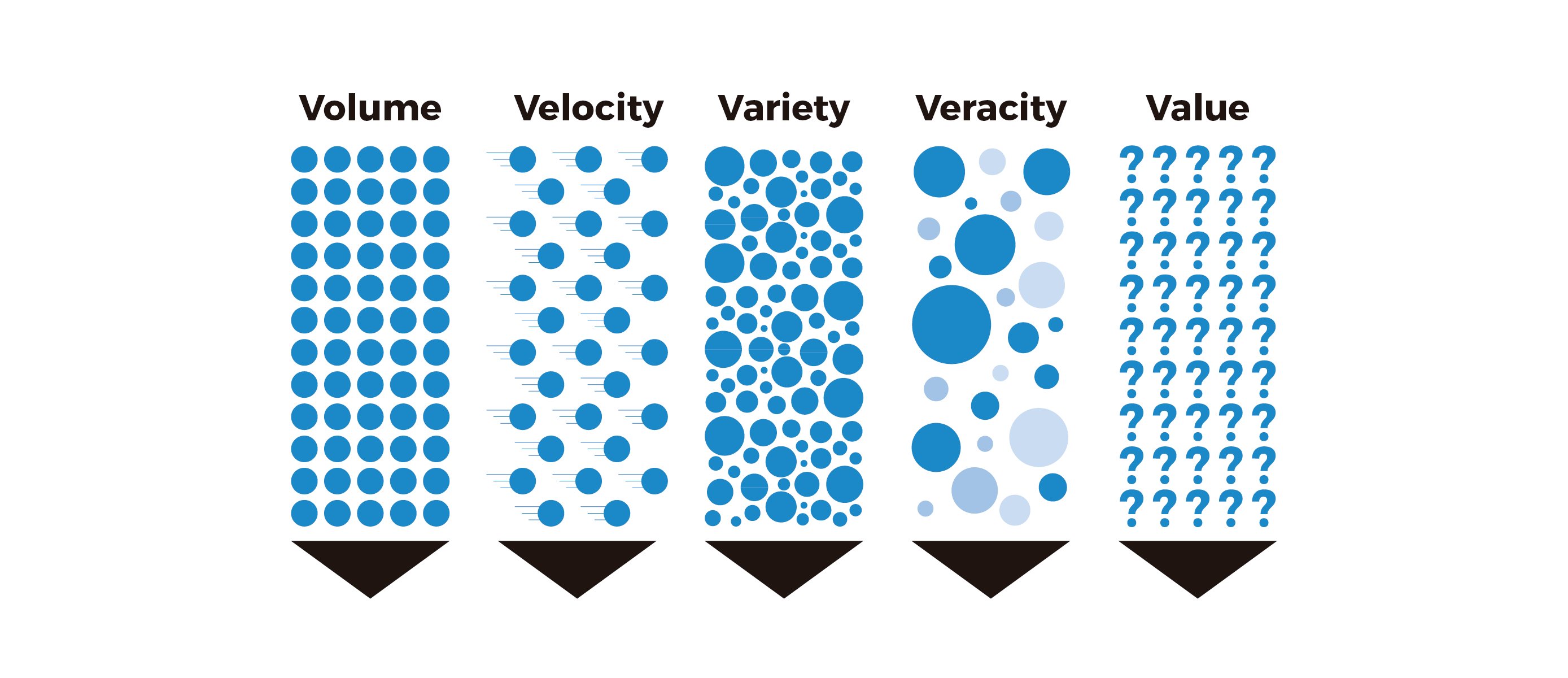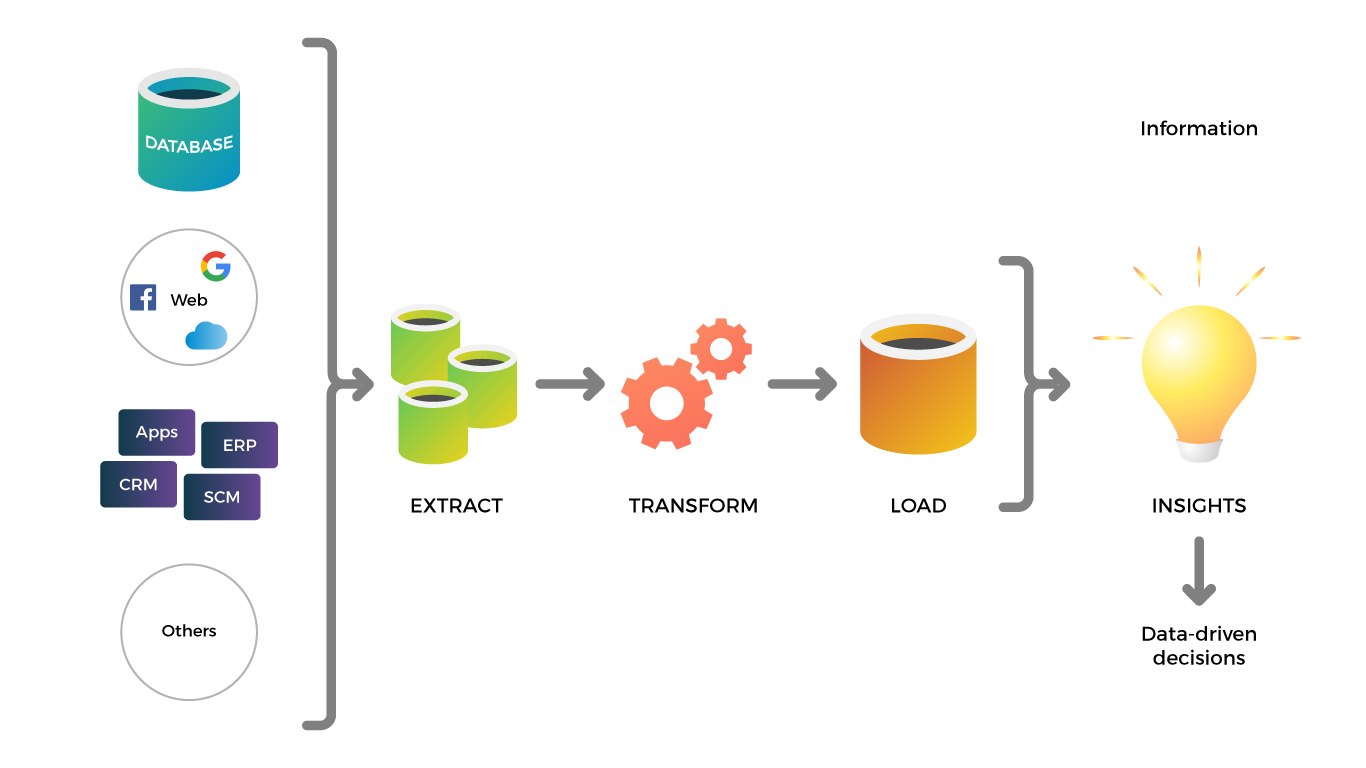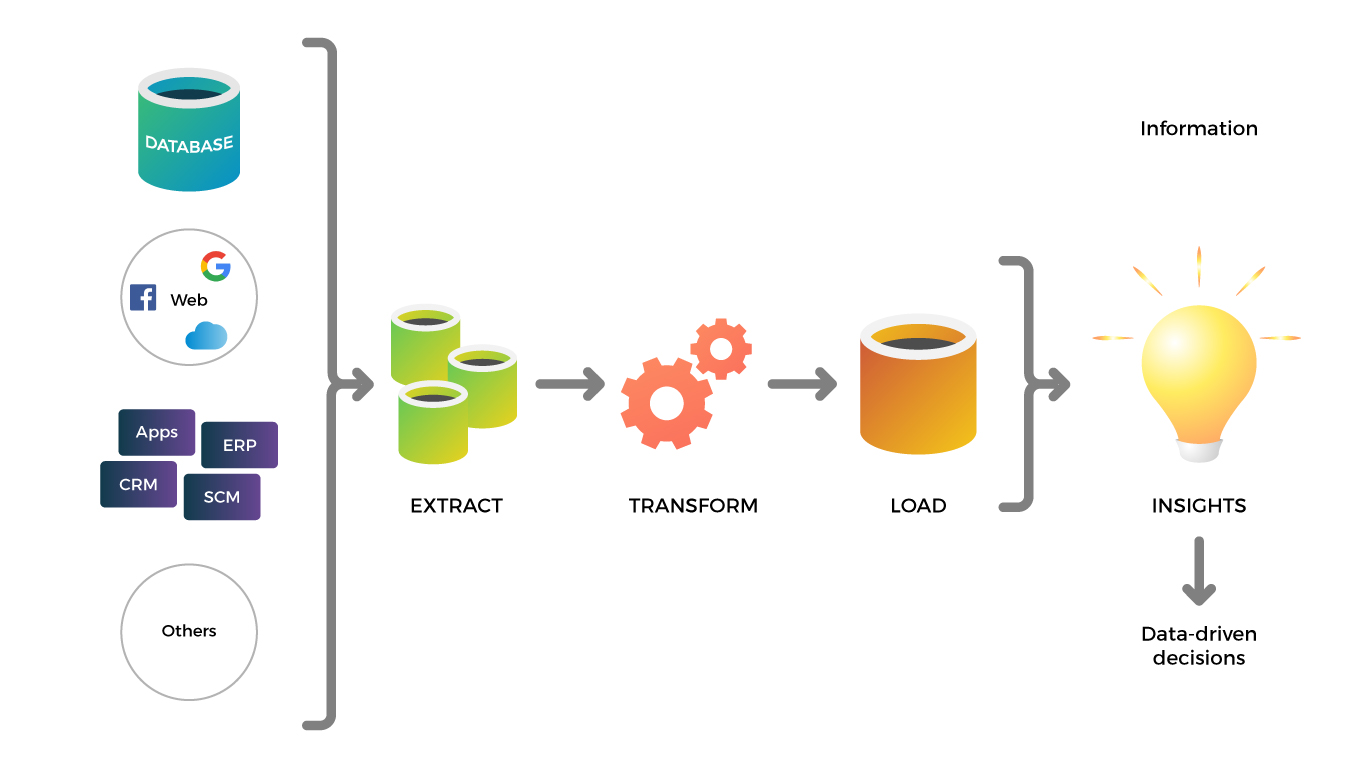Do you want to implement an ETL process but you don't know which tool to choose? Don't worry! Here we explain how to pick the right tool for you.
If you're here, you probably have already heard about the ETL process - if not, we explain what ETL is here - and you probably know that it's essential so that companies can have control over their data, make better decisions and optimize their business intelligence strategies. If you're thinking about implementing an ETL process in your company, here are the best tools to do so.
What is ETL?
ETL stands for Extract, Transform, Load, and it is a process used to integrate data from multiple sources into a centralized data repository or data warehouse. ETL is widely used in data management and business intelligence to ensure that data is accurate, consistent, and readily available for analysis and reporting.
Let's break down each step of the ETL process:
-
Extract: In the "Extract" phase, data is retrieved from various source systems, which can include databases, applications, spreadsheets, logs, cloud services, and more. The goal is to collect relevant data from different sources and consolidate it into a staging area for further processing.
-
Transform: During the "Transform" phase, data is cleaned, enriched, and transformed into a standardized format that is suitable for analysis. This step involves data cleansing (removing duplicates, handling missing values), data validation, data enrichment (adding calculated fields or derived attributes), and data integration (merging data from multiple sources). Data transformation ensures that the data is consistent, accurate, and aligned with the business's requirements.
-
Load: In the "Load" phase, the transformed data is loaded into a target data repository, typically a data warehouse or a data mart. The data warehouse is a centralized database that stores historical and current data from various sources, organized in a way that facilitates efficient querying and reporting. The "Load" phase involves populating the data warehouse with the transformed data, making it available for analytics and reporting.
This steps can also be performed using a new other perspective: ELT, which changes the order of Transform and Load among other differences with ETL.
Why ETL is one of the best methods for data integration within a company?
-
Data Quality and Consistency: ETL processes include data cleansing and transformation, ensuring that data is standardized, consistent, and accurate across all sources. This results in improved data quality, reducing the risk of errors in analysis and reporting.
-
Centralized Data Repository: ETL allows data from different sources to be centralized in a single data warehouse. This centralized repository provides a unified view of data, making it easier for users to access and analyze information from multiple sources.
-
Historical Data: ETL processes can handle historical data, allowing companies to perform trend analysis and make data-driven decisions based on historical insights.
-
Scalability: ETL processes can handle large volumes of data from diverse sources, making it suitable for organizations with vast amounts of data.
-
Performance: By transforming and cleaning data before loading it into the data warehouse, ETL optimizes data for analytical queries, leading to faster query performance and improved reporting capabilities.
-
Automation: ETL processes can be automated, ensuring that data is regularly refreshed and up-to-date in the data warehouse, reducing manual efforts and ensuring data consistency.
-
Integration with BI and Reporting Tools: ETL processes prepare data for analysis, making it compatible with various business intelligence tools and reporting platforms.
Overall, ETL is a crucial method for data integration within a company as it ensures that data is accurate, consistent, and easily accessible for analytics and reporting, enabling organizations to make data-driven decisions and gain valuable insights from their data.
What capabilities should an ETL tool have?
Before deciding on one option or another, it is important to consider the requirements that an optimal ETL tool must meet. According to Gartner, one of the world's leading technology research and consulting companies, an ETL tool should have the following capabilities:
- Connectivity and adaptation: An ETL tool must have the ability to connect to multiple data structures such as: relational and non-relational databases, ERP, CRM or SCM applications; files in different formats, web pages, email, office tools or content repositories.
- Data delivery: The tool must also have the ability to provide data to other applications, processes or databases in various formats.
- Data transformation: An ideal ETL tool must be capable of performing data transformations. These can be basic transformations (simple calculations or type conversions), intermediate transformations (aggregations, sums, etc.) or complex transformations such as text analysis.
- Metadata and data modeling: Our tool must be able to retrieve the original data models, create and maintain models, synchronize changes in the metadata and have an open metadata repository.
- Design and development environment: Similarly, it must have the skills to graphically represent the objects in the repository, test and debugging support, manage workflows, etc.
- Data management: A suitable tool must be able to validate data quality, create profiles, have data mining capabilities, etc.
- Adaptation to other platforms: It is essential that the tool adapts to other operating systems and hardware platforms of the organization.
- Administrative operations: The tool must be able to monitor data integrations, handle errors, execute security controls, etc.
- Architecture and integration: An ETL must guarantee the interoperability between the different elements that make up the data integration tool.
- SOA (Service Oriented Architecture).

Types of ETL tools
Once we have clear the technical capabilities that an ETL tool must have, it is necessary to know the different categories of tools that exist, since according to the characteristics of our company and the amount of data we want to load and transform, as well as the use that we are going to give them, we should choose one tool or another.
- ETL Enterprise: These tools have many functionalities and can connect to a wide range of data sources. However, their cost is higher than the others, so they are usually chosen by very large companies.
- ETL Open Source: Free and open source ETL tools. These tools have a general approach and therefore, often require difficult customization processes so that they can be adapted to the companies' needs. The customization requires experts, usually external to the company, which ends up meaning that these types of tools, despite being free, have an additional cost.
- Customized ETL: Companies can develop their own customized ETL tools. Although they usually meet the company's specific requirements, their development is very expensive, requires experts and involves a great deal of prior effort.
- ETL Cloud: Google, Microsoft and Amazon have their own ETL services integrated into the cloud. This type of services provide more flexibility than other types of tools.
What to consider when choosing an ETL tool?
Once we have a clear idea of the types of ETL tools that we can find in the market, it is essential to know what we should base our choice of tool on. It is important to emphasize that there are no better or worse tools, but simply that some will be more suitable than others according to the particularities, needs and amount of data of the company.
When choosing an ETL tool we must consider, at least, these aspects:
- The price: Not only the cost of acquisition, but also the added costs such as consulting, support, training, etc. Depending on the tool we choose, the added costs will be higher or lower. As we have already mentioned, choosing an Open Source tool usually implies added costs.
- Usability: It is elementary to keep in mind that some tools have a more complex use than others, and that each one requires a different level of technical knowledge. For example, tools with a friendly graphic interface are usually easier to use for non-experts.
- Compatibility: It is essential to ensure that the tool is compatible with the company's other operating systems and platforms.
- Speed: The speed of an ETL tool depends on its calculation capacity and on the amount of data we need to extract and load.
- Data quality: A key aspect of the ETL process is that it is a guarantee of the quality of our data. Therefore, when choosing the tool we must be sure that it will validate, cleanse, and consolidate the data.
- Management and control: It is also relevant to choose a tool that has control systems to identify and solve problems or errors that may arise.
Market-leading ETL tools: Gartner's Magic Quadrant
In addition to the list of capabilities that ETL tools should have, Gartner also publishes a report every year called 'Gartner's Magic Quadrant' which lists the best tools for data integration in different categories: Challengers, Leaders, Niche players and Visionaries. The companies that enter the ranking are distributed in a square graph, referenced by each of these terms in one of the corners.
The last Gartner report from August 2020 placed Informatica, IBM, Talend, SAP, Oracle, SAS, Denodo, Microsoft Azure, Qlik and TIBCO Software as the top 10 ETL tool vendors. You can view the complete list below:

Benefits of acquiring the right ETL tool
In this blog we have talked about the benefits of implementing an ETL process before. However, let's review the competitive advantages of choosing the right ETL tool:
- Data-driven decisions: One of the most important benefits of the ETL process is that it allows organizations to make better business decisions based on quality data. Data-driven decisions prevent errors and ensure the development of more efficient business strategies in less time.
- Data quality: In an ETL process the data is purified and cleaned. Redundant, unnecessary or error-prone data is eliminated; whereas useful and reliable data is validated.
- Data integration: The ETL process allows data to be available in multiple formats and from multiple sources. In other words, this process allows all the data of our company to be integrated and helps to have a global and more accurate vision of the activity and situation of the business.
- Automation: ETL tools have the ability to automate certain processes, thus reducing unnecessary tasks and time spent by people in charge of data management.
- Big Data: The process also allows companies to process, work and manage large amounts of data.
- Legibility: The ETL process transforms data -even the less readable ones- into understandable, useful and ready to be analyzed information in data analysis applications such as Power BI. Bismart, as a Microsoft Power BI partner, uses this tool to develop visually attractive and useful reports and charts.




